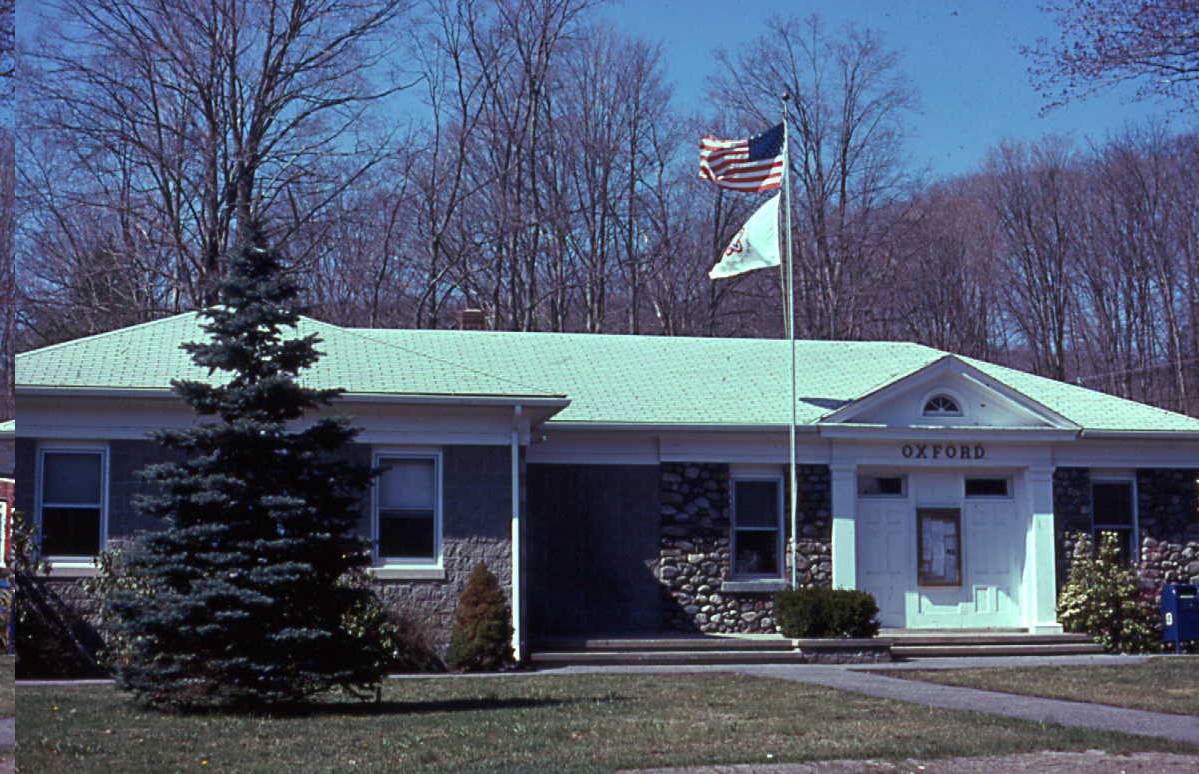#1 Norman Husted Building, the
former
Oxford Town Hall. Taken during 1976, with Bicentennial
flag.
Today this building houses the
Superintendent Of Schools & Res. State Trooper. On
this site,
in Revolutionary days, local men practiced for the Training
Band.
Military drills were held monthly under the local captains.
Along what
is now is Route 67, in the foreground, ran the Oxford
Turnpike. This
route was used by
farmers as far away as Litchfield to drive their cattle and
hogs to
market
in New Haven. The Oxford turnpike was a major route in
colonial
Connecticut, and was the second turnpike to be chartered in
state.
Oxford’s first residents were Indians. Naugatuck
River,
near Pines Bridge, was the site of the largest Indian
encampment in
colony in early history. There were two major tribes
living
in Oxford. The Paugatucks lived on the east bank of the
Naugatuck River
and a few on the west bank in the Chestnut Tree Hill Area. The
Pootatucks were settled nearer to the Housatonic River.
Indian Names that still survive:
Housatonic -- Pootatuck name for River of the great Falls.
Naugatuck -- One Tree, apparently for a single tree which
stood by the
falls in Seymour.
Punkups -- Indian group which lived in that area of Oxford.
One native American's name is remembered in
Toby's
Mountain which is now a part of Beacon Falls. Captain
Ebeneezer
Johnson obtained Toby as a young Indian after a battle.
Johnson later freed him and gave him land on the
area mountain. After Toby died, he willed the mountain back to
white
men, including Timothy Johnson, Oxford veteran from American
Revolution
and son of his former master.
Early Settlement:
As far as the white settlement is concerned,
Oxford was originally a part of Milford, which was later split
into
Milford and Derby. In 1665, Edward
Wooster
killed seven wolves in the Derby area,
and tried to collect bounty money for them. But neither
Milford nor
New
Haven would pay it -- claiming it was not a settled village,
though
Wooster
was living there.
Oxford’s Incorporation from Derby:
Oxford residents wanted a separate town,
but Derby
voters refused to grant the resident the right to a separate
town. The
question was voted at annual meeting in Derby on a regular
basis,
with the Oxford residents losing each time. The procedure for
town
meeting
was that the people would all go to Derby prior to the
meeting, stop at
a local tavern for rest and refreshment before going to the
meeting.
Because
they made the tavern stop, the town meetings always opened
late. One
year,
in 1798, the Oxford residents went directly to the meeting
house, and
started the meeting while the Derbyites were still at the
taverns. They
opened
the meeting and voted to allow Oxford to be set off as a
separate
parish.






